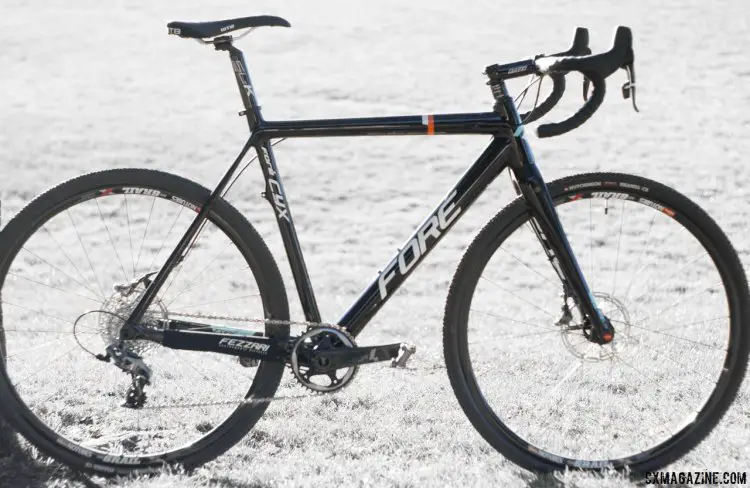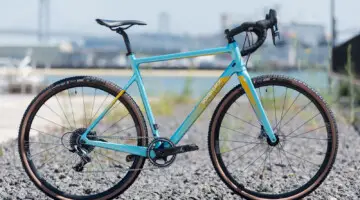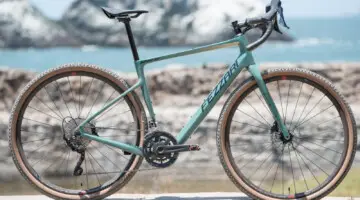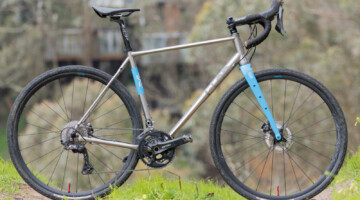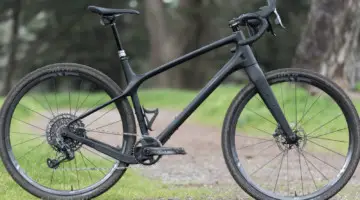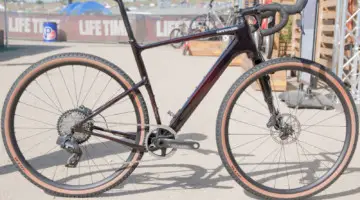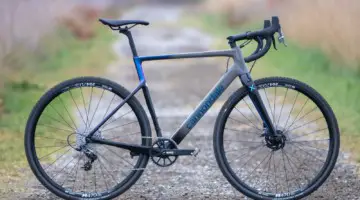In Issue 27, we tested the Fezzari Foré Cyx, and today we are offering one full review of the many in that issue. For other extensive reviews like this one, including models from BH, Raleigh, Focus, Jamis, Ridley, Volagi and Fairdale be sure to order your backcopy of Issue 27 today. Also, don’t miss some of the updated details of the Cyx that we captured at Sea Otter 2015.
by Lee Slone
Fezzari is a name you may not have heard of, but this direct-to-consumer brand out of Utah is trying to change that with a modern entry into the cyclocross market. The Foré Cyx shares the same full-carbon frameset across all builds and is offered at a wide range of price points.
THE FRAME:
The frame is offered in five sizes (50, 53, 55, 58 and 61cm). Our test bike was a 55, or “M”-sized bike, which has a 56cm seat tube (center-to-top) and a horizontal top tube that is just 54.5cm long. The head tube is 14.5cm long. The head and seat angles are 71.5 and 73.5 degrees, respectively. All sizes feature 425mm chainstays and a 60mm bottom bracket drop.
Fezzari went with thru-axles front and rear on the Cyx for the frame and fork. In front, their disc-specific, tapered (1.5” to 1.125”) carbon-steerer fork holds on to the wheel with a 15mm thru-axle and features housing clips along the back of the left blade, above the 160mm disc brake post- mount. A 142x12mm DT-Swiss thru-axle locks the rear wheel in place.
Fezzari eschews the trend toward over-sized press-fit bottom bracket standards and uses a standard 6.8cm English-threaded shell.
All cables and housing are routed internally on the Cyx, although the front shift housing exits the top tube and terminates at a cable stop midway down the seat tube. As such, a pulley is necessary for any of the currently available 11-speed, bottom-pull front derailleurs. The seat tube accommodates a clamp-on front derailleur which leaves a clean look for single-ring builds. The Cyx accepts a 31.6mm seatpost, clamped by a house-branded collar.
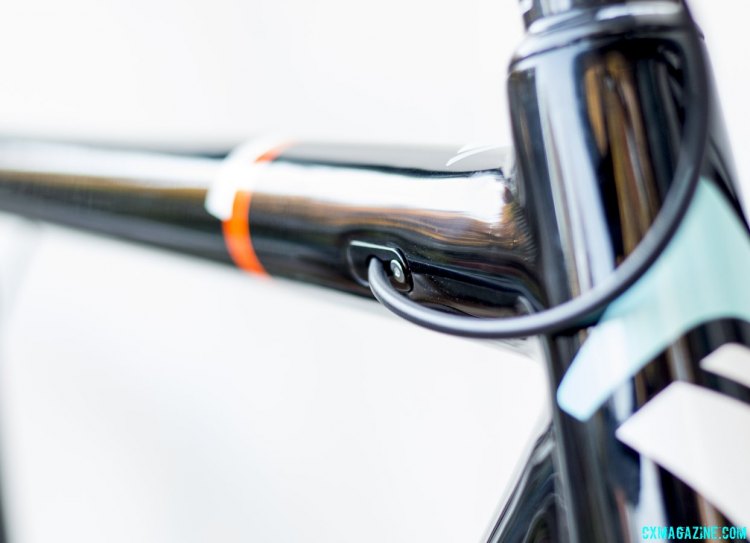
The Fezzari Foré Cyx includes internally-routed cables, although a pulley will be necessary for a bottom-pull front derailleur. © Cyclocross Magazine
The rear shift cable runs with full-length housing with an entrance at the front of the down tube and exits from a cable port on the down tube just ahead of the bottom bracket junction. It then runs along clips underneath the chainstay (beneath a thick, MTB-style chainstay protector) to the rear derailleur. Cable port covers for Di2 wiring are also available. No rack or fender mounts are present, although there’s room for a single bottle cage on the oversized down tube.
Fezzari says that the carbon layup and tube shapes were selected to add comfort, and to give additional reinforcement to the bottom of the down tube and chainstays, increasing resistance to rock strikes and other impacts from below.
THE BUILD:
Despite being a customer-direct brand, Fezzari applies a custom touch to the buying process—the company collects measurements and riding preferences from the buyer and selects the frame size, stem length and angle, handlebar width, saddle setback and offset, and crank arm length appropriately. This customization also ex- tends to the parts spec, although there are several stock builds available to use as a starting point. Fezzari built our review bike similarly to their top-of-the-line “5.0” spec, but with alloy wheels instead of carbon.
A full SRAM Force CX1 group handles shifting and braking. By request, to accommodate our lengthy (and sometimes steep) mixed-terrain adventures, we opted for a small 38T CX1 narrow/wide front chainring up front and an 11-32, 11-speed PG-1070 cassette in the back. Force CX1 hydraulic disc calipers clamp down on 160mm SRAM Centerline rotors front and rear.
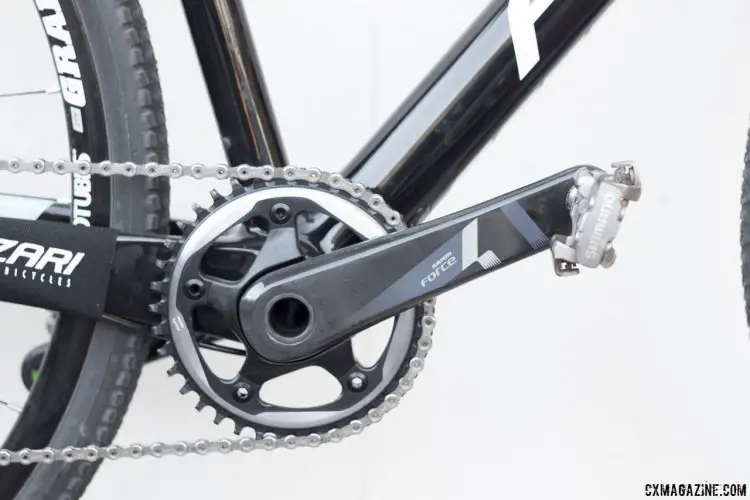
SRAM’s 38t Force CX1 chainring was enough to do all the heavy lifting for our tests on and off the cyclocross course. © Cyclocross Magazine
Fezzari believes in tubeless for ’cross, and offers various tubeless-ready wheel and tire choices. Optionally, they will even set the tires up tubeless before sending the bike out. We happily accepted, and our bike shipped with a Stan’s NOTUBES’ Grail Team wheelset with tape and valve stems pre-installed and 34mm Hutchinson Piranha 2 tires size sealed up and ready to ride. The Grail Team wheelset uses Stan’s 3.30 Disc hubs (which are convertible between different axle standards by swapping end caps) with 32 spokes front and rear.
The Cyx’s cockpit consisted of a matching FSA SL-K carbon seatpost and compact handlebars paired with a house-branded stem. Lizard Skins DSP 2.5 bar tape and a WTB Volt Race saddle provided a nice, grippy set of contact points.
Perhaps uniquely for a consumer-direct brand, Fezzari boasts a “23-point custom setup” when purchasing a bike. Some of these points are basic adjustments (e.g., “Tune Front Brakes”) but several of them are sizing- and fit-related. Fezzari collected our measurements and selected the frame size, handlebar width, stem length, steerer tube length, crankarm length and seat position to match. Would this process separate the bike from the crowd?













